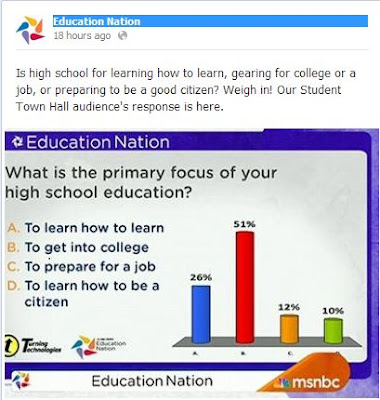What is your students' mission?
I recently published a post about the role of students as producers of educated work (as opposed to receivers of an education) which has been well received. Some feedback I have received has been for some guidance on how to help students begin thinking of themselves in terms of being " Student CEOs ." One way you can engage with your students is to ask about their mission. Student CEOs think about learning as their business. Every business needs a mission - a reason to exist. Missions consist of two basic parts. 1. A purpose statement 2. An action statement The purpose statement answers the question, "What is your purpose?" The answer should be short; one sentence is ideal. For example: " (Fill in the name of the student), inc. produces high quality, growth oriented educated work. " The action statement answers the question, "What do I do to accomplish this purpose?" As with the purpose statement, the action statement sho

